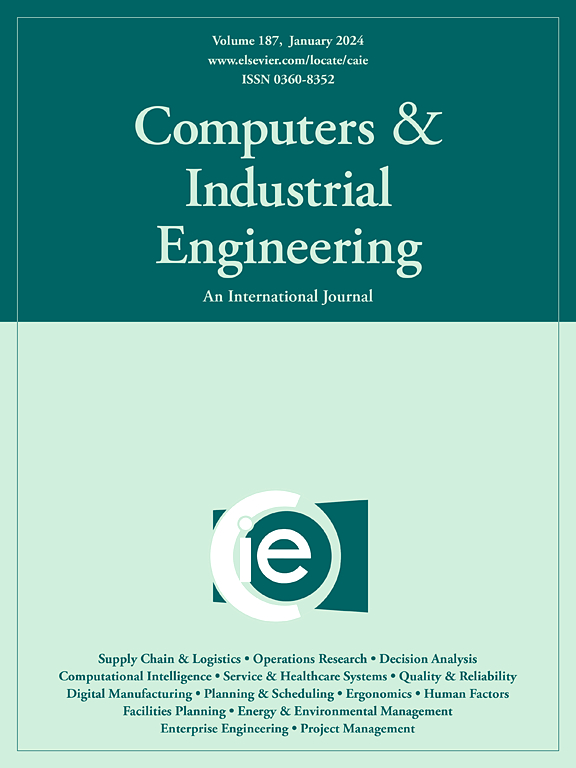The emergency location-routing problem with facilities sharing and evacuation
IF 6.5
1区 工程技术
Q1 COMPUTER SCIENCE, INTERDISCIPLINARY APPLICATIONS
引用次数: 0
Abstract
This paper addresses an emergency location-routing problem encompassing facility sharing and evacuation within an emergency response system. We develop an integrated network combining an emergency response center, two disaster site types, and two emergency facility types. A differentiated time window distinguishes the rescue time sensitivity of the two disaster site types, while a time-dependent psychological cost function assesses the psychological impact on victims. The Bureau of Public Roads (BPR) road resistance function is adapted to evaluate post-disaster traffic capacity. The problem is formulated as a mixed integer programming model to minimize the facility opening, emergency vehicle travel, and victims’ time-dependent psychological costs. We investigate the model’s analytical properties and construct several valid inequalities. Seven problem-specific route generation heuristics are proposed to warm start the set partitioning model, yielding high-quality emergency vehicle routes. Numerical experiments on small- and medium-scale instances validate the performance of the proposed method. The three strategies for comparison, evaluated using cases from Xi’an, China, demonstrate that our method achieves a reasonable balance between fairness and efficiency.
设施共享和疏散的应急定位路径问题
本文研究了应急响应系统中包含设施共享和疏散的应急位置路由问题。我们建立了一个应急响应中心、两种灾害现场和两种应急设施的综合网络。不同的时间窗口区分了两种灾害现场类型的救援时间敏感性,而时间依赖的心理成本函数评估了对受害者的心理影响。利用公共道路局(Bureau of Public Roads, BPR)的道路阻力函数来评估灾后交通能力。该问题被表述为一个混合整数规划模型,以最小化设施的开放、应急车辆的行驶和受害者的时间依赖的心理成本。我们研究了模型的解析性质,构造了几个有效的不等式。提出了7种针对问题的路径生成启发式算法,以热启动集合划分模型,生成高质量的应急车辆路径。在中小规模实例上的数值实验验证了该方法的有效性。以中国西安为例,对这三种策略进行了比较,结果表明我们的方法在公平与效率之间取得了合理的平衡。
本文章由计算机程序翻译,如有差异,请以英文原文为准。
求助全文
约1分钟内获得全文
求助全文
来源期刊

Computers & Industrial Engineering
工程技术-工程:工业
CiteScore
12.70
自引率
12.70%
发文量
794
审稿时长
10.6 months
期刊介绍:
Computers & Industrial Engineering (CAIE) is dedicated to researchers, educators, and practitioners in industrial engineering and related fields. Pioneering the integration of computers in research, education, and practice, industrial engineering has evolved to make computers and electronic communication integral to its domain. CAIE publishes original contributions focusing on the development of novel computerized methodologies to address industrial engineering problems. It also highlights the applications of these methodologies to issues within the broader industrial engineering and associated communities. The journal actively encourages submissions that push the boundaries of fundamental theories and concepts in industrial engineering techniques.
 求助内容:
求助内容: 应助结果提醒方式:
应助结果提醒方式:


